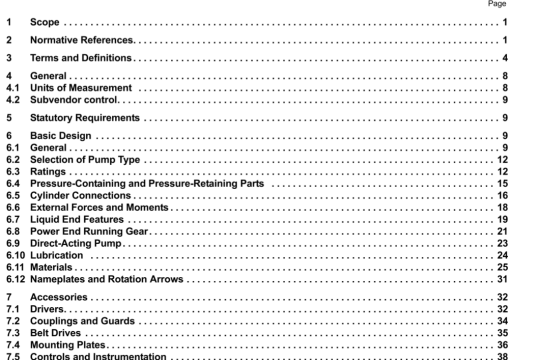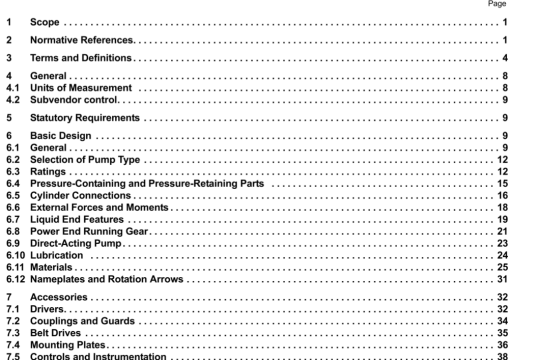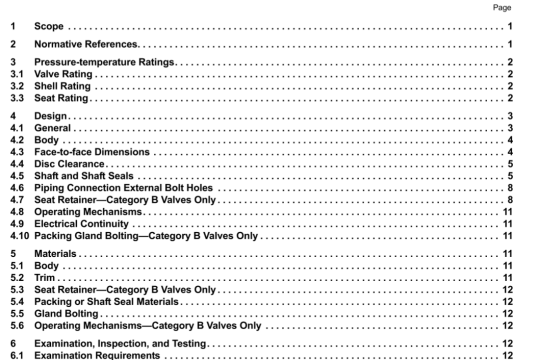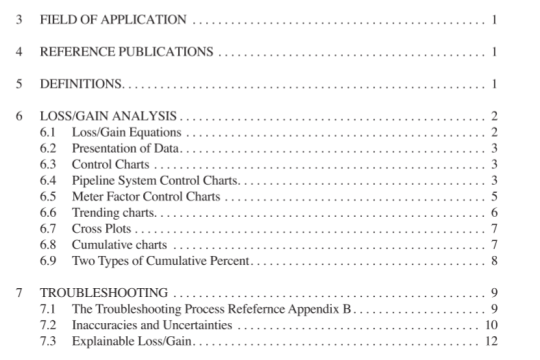API RP 2I:2008(2015) pdf download
API RP 2I:2008(2015) pdf download.ln-service Inspection of Mooring Hardware for Floating Structures.
2.3.4 Cleaning
One should clean the chain with a high-pressure hose. Also marine growth and corrosion scale should be removed at
every 100 ft of chain and at places where close examination is needed.
2.3.5 Inspection Steps
2.3.5.1 Visual Inspection
One hundred percent of the chain is visually inspected for missing studs, bent links, corrosion, sharp gouges. loose studs, cracks, and wear When using the offshore inspection method, the line speed should be less than 30 ft per minute. When chain thnormalities are suspected, the chain movement should be stopped for close examination. The inspector should also watch the movement of the chain passing through the wildcat. Jumping of chain over the wildcat may indicate misfit between the chain and wildcat.
The inspector should tap each stud with a hammer to check for loose studs. An experienced inspector can detect loose studs by listening to the tone of the tapping.
The offshore inspection method is most efteclive where one inspector checks the links in a verlical plane while another inspector checks the links in a horizontal planeS
The last portion of chain should be brought on board the deck of the drilling vessel or the deck of the workboat for inspection.
2.3.5.2 Connecting-link Inspection
To perform a connectlng-liik inspection, the inspector should dismantle all connecting links and inspect by MPI or replace with links that have been examined by MPI.
2.3.5.3 Measurement
One should measure the following parameters once at every 100 ft of chain and on both sides of each connecting link. It chain problems are found, more measurements may be needed.
For chain diameters in two perpendicular directions as shown in Figure 2a. one should remove corrosion scale and marine growth before measuring diameters. The diameter measurement should be performed at the location with the worst reduction in cross-sectional area. which is normally the grip area or the area that rubs against the windlass wildcat (see Figure 2b). If the gnp area has the worst reduction and the offshore inspection method is used, two diameters should be measured as shown Ni Figure 2c.
In the offshore inspection method, length over five links can be measured with a go-no-go gauge (see Figure Sa). For the dockside inspection method, length over five links cannot be measured accurately since the chain is not under tension. Therefore, the length of individual links should be measured by a go-no-go gauge as shown in Figure 5b. Another option of chain length measurement for dockside inspection is shown in Figure 5c.
If grinding is performed to remove surface defects, one should measure link diameter after grinding with a diameter caliper as shown in Figure 2d
2.3.5,4 Anchor and Anchor Jewelry Inspection
The inspector should visually inspect all anchor jewelry such as anchor shackles, swivels, open links, and connecting links- In addition, certain areas as shown in Figure 8 should be inspected by MPI. MPI procedures should be based on ASTM E709 (13)
g) Cracks detected by MPI in the internal locking area of connecting links. External surface defects in connecting links are not cause for rejection if they can be eliminated by grinding to a demh of no more than 8 % of the nominal diameter of the chain.
h) Length over five bnks exceeding 23.25 times the nominal chain diameffir (offshore inspection method) or the length of an individual link exceeding 6.15 limes the nominal chain diameter (dockside inspection method). The upper limg values of length over five bm*s arid length of the individual link for different sizes of used chain can be tound in Table 1.
I) Excessive wear or a deep surface crack on anchor shackles, open links, or swivels. Moderate wear and surface cracks that can be eliminated by light grinding are acceptable for the anchor jewelry. They should be rejected, however, under either of the following conditions.
— Reduction in cross-section area doe to wear and grinding is more than 10 %. ‘fls is equivalent to a 5 % reduction in the average diameler for distributed wear or grinding.
— Reduction in chameter or critical thickness in any direction is more than 10 %.
j) Cracks in anchor or noticeable anchor deformation, which impact anchor performance. such as bending of anchor shank or fluke. Cracks are acceptable if they can be repaired by proper welding procedure.




